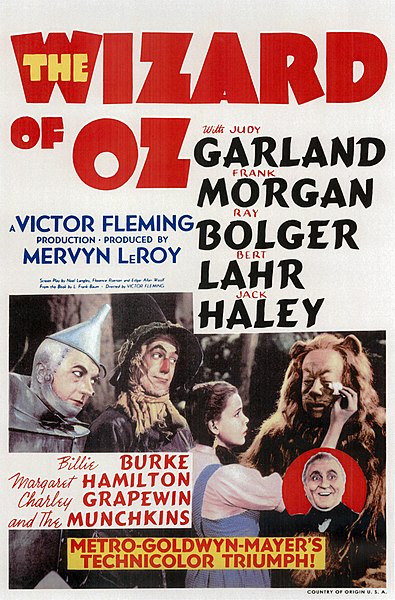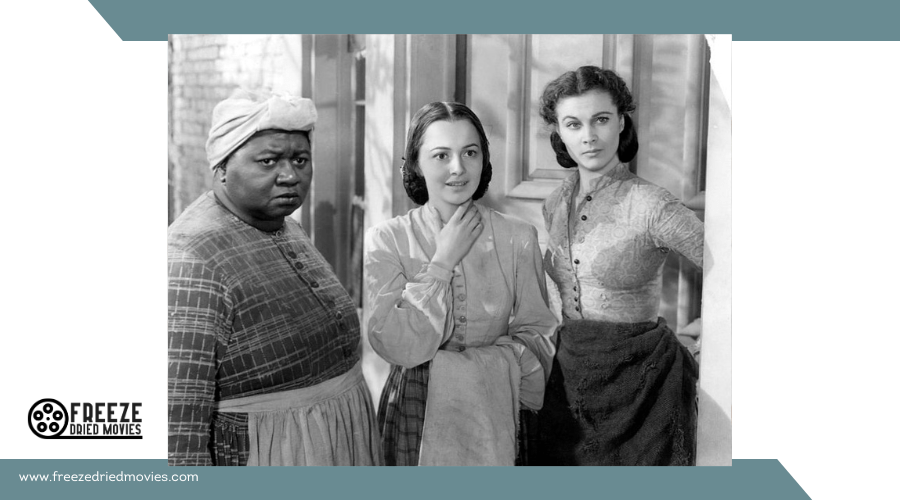How 1930s Cinema Influenced the Golden Age of Television

The cinematic breakthroughs of the 1930s set the stage for television's Golden Age. Innovations such as synchronized sound and Technicolor revolutionized storytelling and production quality, which studios then adapted for TV. Major studios recognized television's potential and leveraged their film expertise to enhance TV programming. Shifting audience preferences and the impact of antitrust laws also played crucial roles in this transition. These elements intertwined, leading to a new era in home entertainment.
Hollywood's Golden Age
Hollywood's Golden Age, spanning the 1930s and 1940s, was a period when the film industry flourished. During this time, over 7,500 feature films were released, captivating an audience of more than 80 million Americans weekly. Major studios like MGM, Paramount, and Warner Bros. dominated the industry through vertical integration, controlling every aspect of film production, distribution, and exhibition. This comprehensive control ensured a consistent output of high-quality content that kept audiences returning to theaters.
Iconic films such as *The Wizard of Oz*, *Casablanca*, and *Gone With the Wind* became cultural landmarks, showcasing advancements in storytelling and production techniques. The introduction of sound films, beginning with *The Jazz Singer* in 1927, transformed the cinematic experience, adding a new layer of depth and immersion that fascinated viewers.

The star power of actors like Humphrey Bogart and Judy Garland enhanced box office revenues, further cementing the era's success. However, by the end of the 1940s, the rise of television networks began to lure audiences away from theaters, marking the end of Hollywood's Golden Age as the film industry faced new challenges.
Technological Advancements
Cinema's technological advancements, such as synchronized sound and Technicolor, significantly influenced early television innovations. These breakthroughs raised production quality standards, enabling studios to create visually rich and compelling narratives that shaped the future of television.
Early Broadcast Innovations
The 1930s marked a pivotal period for television, with significant technological advancements shaping the future of broadcasting. A milestone event occurred at the 1939 New York World's Fair, where television technology was publicly demonstrated, heralding a new era in mass entertainment. This period also coincided with Hollywood's Golden Age, prompting film studios to explore television as an additional revenue stream.
Early experimental broadcasts began in 1930, setting the stage for future programming developments. The introduction of the cathode ray tube was a breakthrough, enhancing image quality and making television broadcasts more appealing. By the decade's end, broadcasts included sports events and news programs, highlighting the medium's potential.
These advancements not only improved the viewing experience but also expanded the possibilities for content delivery. The film industry, recognizing television's growing influence, began to view it as a complementary platform rather than a competitor. This era of technological innovation laid the foundation for the diverse and robust programming of the Golden Age of Television, transforming the landscape of mass entertainment.
Impact on Studio Systems
The film reels spinning in darkened theaters was a tribute to the technological marvels that defined cinema's Golden Age. These advancements extended beyond movie palaces. Driven by the success of synchronized audio and video introduced by *The Jazz Singer* (1927), film studios began exploring similar synchronized experiences for television. These technological leaps influenced both film and television, setting the stage for television's progression.

Major studios operating under the studio system with vertical integration harnessed their extensive resources and talent networks to transition smoothly into television production. This ensured they remained relevant and continued to captivate audiences. The Golden Age of Hollywood saw the rise of Technicolor, transforming visual storytelling and directly influencing television as color broadcasts became standard in the 1950s.
Here are three key impacts:
- Special Effects: Pioneering special effects from cinema enhanced TV's visual narratives.
- Cinematic Experience: High production values in film set similar standards for television programming.
- Vertical Integration: The studio system's structure facilitated an efficient transition to TV content production.
The technological advancements and cinematic experiences of Hollywood's Golden Age set a high bar, pushing television to adopt and innovate continually.
Antitrust Laws Impact
Antitrust laws significantly reshaped Hollywood in 1948 when the Supreme Court ruled against Paramount Pictures for price-fixing. This landmark decision led to the separation of film production, distribution, and exhibition, fundamentally altering the Hollywood studio system. By prohibiting major studios like Paramount Pictures from owning theater chains, antitrust laws diminished their control over film distribution and exhibition, which greatly impacted their profitability.
The breakup mandated by the Paramount Decrees fostered greater competition. Independent film production flourished as new players entered the market, utilizing alternative distribution methods to reach audiences. This diversification forced Hollywood studios to rethink their strategies and shift toward television.
Studios began investing heavily in television, acquiring interest in TV stations to adapt to the changing media landscape. This move was essential for recapturing audience engagement that had shifted away from traditional cinemas. The Cold War period's blacklisting of suspected Communist sympathizers further depleted the film industry's talent pool, pushing studios to diversify their content and explore new media platforms.
Audience Preferences Shift
In the late 1940s, a significant shift occurred as families increasingly chose the convenience of watching shows at home, spurred by the rise of broadcast television. This new medium provided free entertainment, quickly captivating audiences and leading to a decline in cinema attendance. By the mid-1950s, over half of American households owned a television, fundamentally altering audience preferences and challenging Hollywood's dominance.
As television gained popularity, many prominent film stars transitioned to the small screen, offering audiences the excitement of seeing their favorite actors in their living rooms. This shift diminished the allure of cinema, as weekly TV shows became the new norm. Studios had to adapt to this evolving entertainment landscape by producing television shows and licensing films for broadcast.
Key points to consider:
- Convenience: Watching television at home offered a more accessible form of entertainment compared to going out to the cinema.
- Star Power: Seeing beloved Hollywood stars on TV made the medium more attractive.
- Diversification: Studios responded to declining film popularity by exploring other ventures like theme parks and record labels.
This period marked a significant transformation, redefining how audiences consumed entertainment and signaling a new phase in the industry.
Television's Rise
The rise of television revolutionized entertainment, beginning with the initial broadcasts in 1939 that featured programs like baseball games and news. After World War II, the demand for televisions surged, with a 43% growth in ownership from 1947 to 1953. This boom significantly altered how people consumed entertainment. By 1948, four major TV networks had launched full prime-time schedules, marking a shift in audience habits and posing a direct challenge to cinemas.
During Hollywood's Golden Era, major motion pictures dominated the entertainment industry. However, the introduction of television offered a new way to enjoy content. Film studios quickly adapted by acquiring interest in TV stations and producing content for the new medium, thereby blending the two forms of entertainment. This strategic move allowed them to remain relevant in an evolving market.
Television's allure as a source of free, at-home entertainment began to erode the dominance of movie theaters. As more households acquired televisions, the decline of the film industry became evident. The convenience and variety offered by TV networks reshaped entertainment consumption, forever altering the landscape that once belonged exclusively to cinemas.
Film Industry Decline
The rise of television in the 1960s led to a significant decline in the film industry as more households opted for free entertainment. Additionally, the 1948 antitrust ruling forced major studios to sell their theater chains, cutting into their profitability. As audience preferences shifted to TV, studios produced fewer feature films and diversified into other ventures to remain viable.
Rise of Television
The explosive growth of television after World War II significantly altered the entertainment landscape, reducing the film industry's dominance. From 1947 to 1953, TV ownership surged by 43%, dramatically affecting the film industry's audience and profitability. By 1948, four major television networks had launched full prime-time schedules, attracting viewers who previously frequented movie theaters, which had weekly attendance exceeding 80 million during Hollywood's Golden Era.
Key impacts included:
- Audience Shift: Television offered free entertainment, leading many viewers to abandon theaters, resulting in a decline in movie attendance.
- Stars Transitioning: Many film stars moved to television, diminishing cinema's allure and enhancing TV shows with star power.
- Studio Adaptation: Studios began investing in TV stations to diversify their revenue streams and adapt to the new medium.
Additionally, the 1948 Supreme Court ruling against Paramount for price-fixing mandated the separation of production, distribution, and exhibition within studios, reducing their market control just as television was on the rise. These combined factors contributed to the film industry's decline by the 1960s, with television becoming the preferred entertainment medium for many households.
Antitrust Law Impact
The rise of television significantly altered the entertainment landscape, but antitrust laws also played a pivotal role in the film industry's transformation. The 1948 Supreme Court ruling against Paramount Pictures dismantled the studio system, mandating that major studios separate their production, distribution, and exhibition operations. This breakup forced studios to divest from owning theater chains, severely limiting their control over film distribution and impacting their profitability.
| Impact | Description |
|---|---|
| Studio System | Dismantled by the 1948 Supreme Court ruling |
| Distribution | Studios lost control over theater chains |
| Profitability | Decreased due to separation of production and exhibition |
| Competition | Increased from the advent of free television entertainment |
| Blacklisting | Talent pool depleted due to Cold War-era suspicions |
As antitrust regulations took effect, major studios faced intense competition from television, which provided free entertainment to home audiences, leading to a decline in movie attendance. Additionally, the Cold War-era blacklisting of suspected Communist sympathizers further drained the film industry of its talent. By the mid-1950s, these challenges forced studios to adopt a more risk-averse strategy, producing fewer films and relying on back catalog sales for revenue. This marked a departure from the Golden Age of cinema. The interplay between these regulatory changes and the rise of television reshaped the entertainment industry permanently.
Changing Audience Preferences
The advent of broadcast television in the late 1930s revolutionized entertainment, providing audiences with free access to a variety of programs and significantly reducing the allure of cinema. By the 1960s, over half of American households owned a television, making it the primary source of entertainment and leading to a notable decline in movie attendance. People could now enjoy TV shows from the comfort of their homes, resulting in a preference for shorter, episodic content over the lengthy commitment required by movies like The Wizard of Oz.
This shift had several significant impacts:
- Migration of Film Stars: Many film stars transitioned to television, captivating audiences with their talents in popular TV shows.
- Studio Diversification: Studios began producing TV shows and licensing films for broadcast, seeking new revenue streams.
- Creative Challenges: The preference for episodic content made it difficult for the film industry to maintain the creative experimentation that characterized Hollywood's Golden Era.
As a result, movie theaters experienced a decline in patrons, forcing the film industry to adapt to the new reality. The drop in movie attendance marked a significant change in entertainment consumption, forever altering the landscape of Hollywood.




